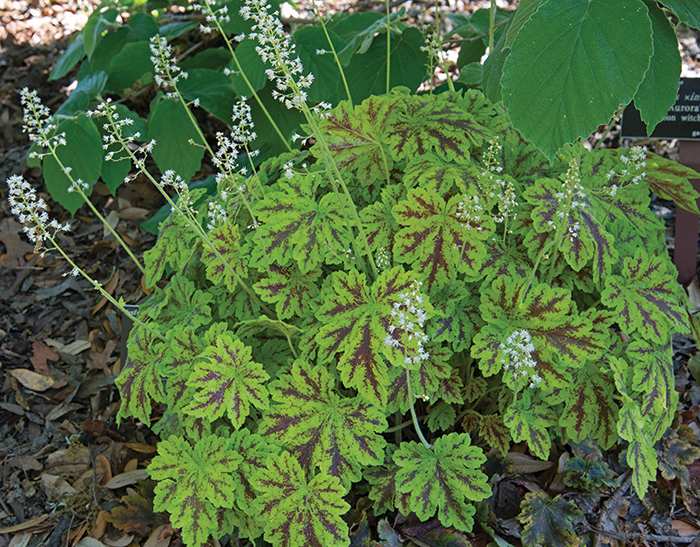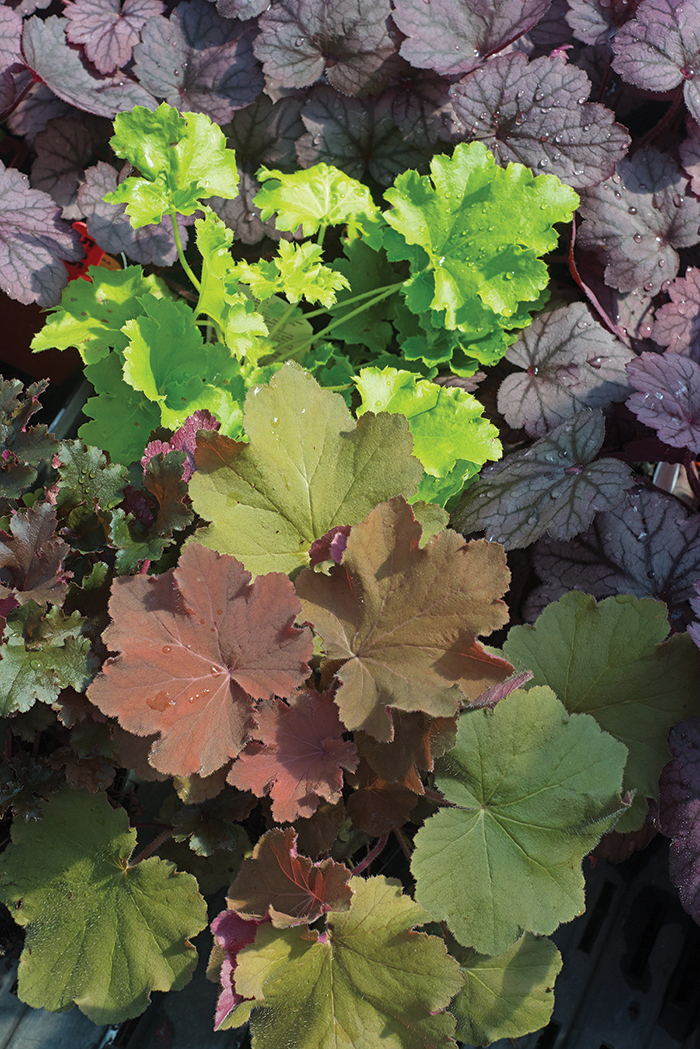Not to dilute the works of Charles Darwin, but, to me, evolution in the garden often means the simple progression of pretty to prettier. A good example of my thin theory is heuchera (Heuchera sp.), also called alum root or coral bells.
Heuchera is a native American plant that, in the 1600s, caught the eyes of European botanists exploring the New World wilds, and it didn’t take long for this cutie from the colonies to grace many gardens across the big pond.
Heuchera in its original form was interesting, but not a visual knockout, so it remained a sideshow for centuries. However, in 1991, its evolution became a revolution. The cultivar ‘Palace Purple’, with unique, dark, smoldering foliage was named the Perennial Plant Association’s Plant of the Year. This not only turned the heads of gardeners, but also plant breeders eager to develop and market new heucheras with even more visual pop.
Today, the once plain heuchera is a Cinderella success story, bringing many elegant hues to the garden ball, including improved purples, screaming limes, delicate reds and ornate coppers. There are even cultivars that sport ruffled foliage or deep leaf serrations, while others have veins etched in deep green, crimson or purple.
But wait, there’s more. Heucheras are also known for flaunting vertical clusters of small, bell-shaped flowers ranging in color from white to pink to red that are irresistible to bees, butterflies and hummingbirds.

Heucherella Solar Power
“Heucherella” is a nifty cross between heuchera and the closely related, similar looking, fellow native tiarella (Tiarella sp.), also known as foamflower. Heucherella — commonly called “foamy bells” — brings to the garden distinctly lobed leaves in a wide variety of colors, impressive vein streaking and strong flower towers.
Heucheras are low-growing, deer-resistant perennials that reach around 12 inches tall, not counting their bloom spikes, and depending on the cultivar, can fan out 12 to over 24 inches wide. Several clustered together create an attractive groundcover in a perennial border, while a single specimen can make a planter mix special.
Placement can be a bit tricky for heucheras because some are less sun-tolerant than others, so do your homework on the selections you bring home. In general, a location that receives morning sun and light shade in the afternoon will please these fancy plants.
Heucheras are cold hardy in our area, but they aren’t mucky soil hardy, meaning root rot can be a problem (especially in winter) if the growing ground doesn’t drain well. A raised bed, rock garden, container or well-worked, heavily amended site are all solid solutions to soggy soil.
While heucheras can be regular pleasures in your garden, it is not a bad idea to reinvigorate the plants every three to four years by dividing them. I usually do this deed in early autumn, and my sassy-looking heucheras have always rebounded from the interruption—call it thrive-al of the prettiest, if you will.
In July
Garden visits from cats, dogs, squirrels, rabbits and raccoons often spell trouble. One way to ward off their wanderings is to sprinkle fine-ground black pepper around your plants. These critters have sensitive noses, and a snoot full of this herbal sneeze powder (which will have to be reapplied after it rains) is sometimes enough to encourage them to romp elsewhere.
The vegetable garden is shifting into full production mode now. To keep the homegrown goodies coming, harvest squash, cucumbers, okra, green beans and tomatoes at least once a week to stimulate production well into the growing season.
Don’t think brown patches in your yard are automatically the result of a hot, dry summer. Stick a shovel into the top few inches of soil, and turn it over. See any stubby, white “worms?” Lawn grubs are gorging themselves on the roots of your grass.
- Point. Click. Post.
- Angels Among Us
- Farm to Cup
- Cook at Home
- Surviving Crisis
- Heuchera: The Evolution of Pretty
- Millstone Creek Orchards
- John Herring
- Lessons I Learned in Quarantine







